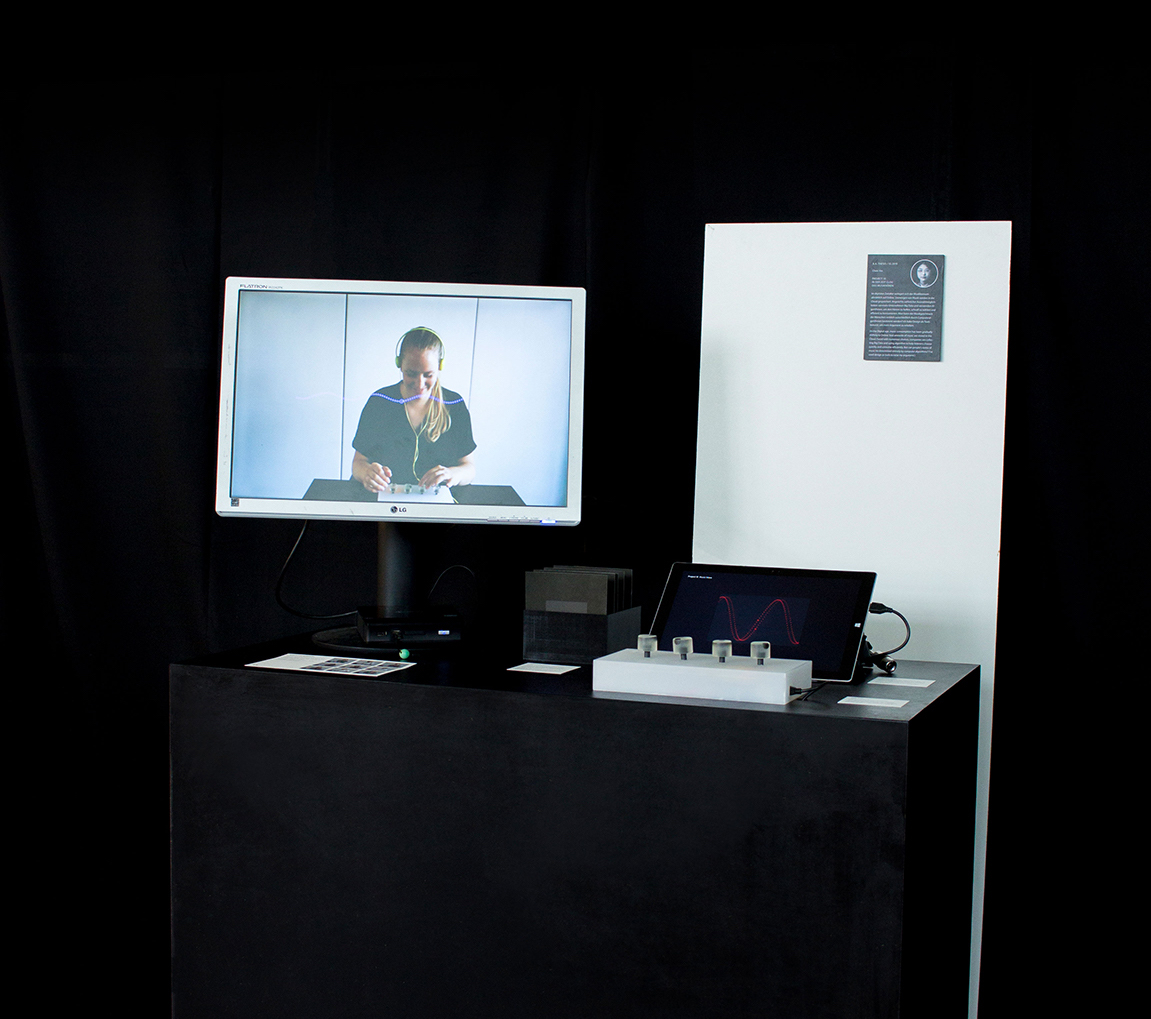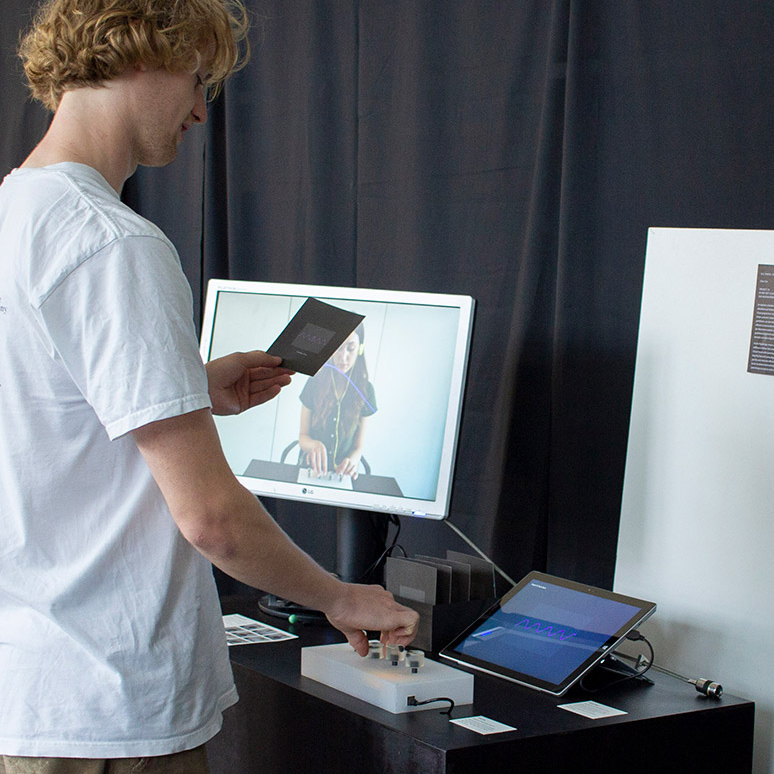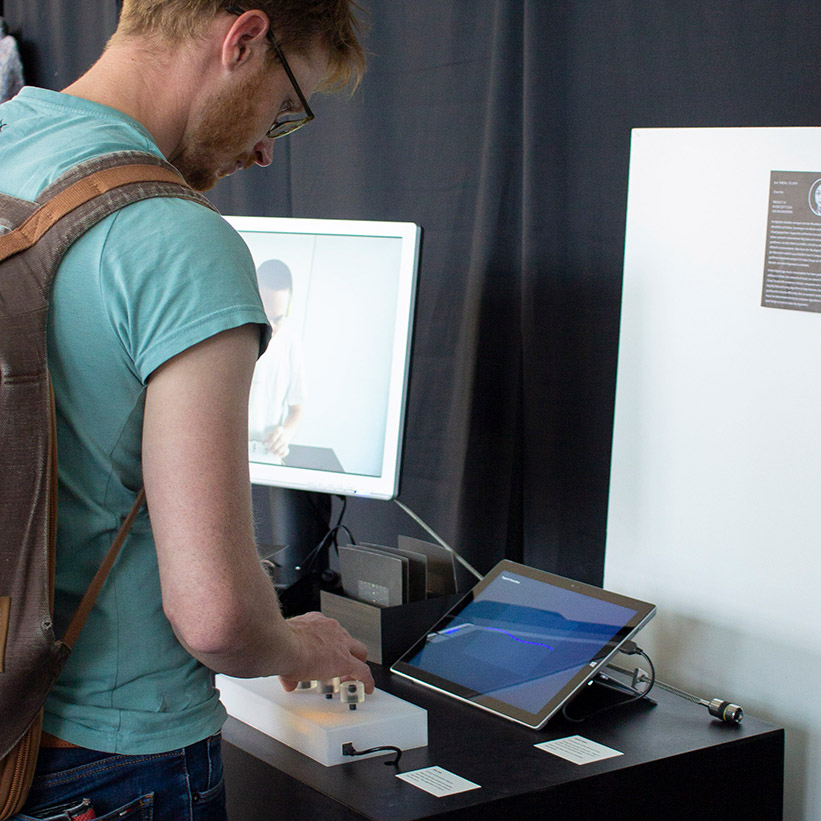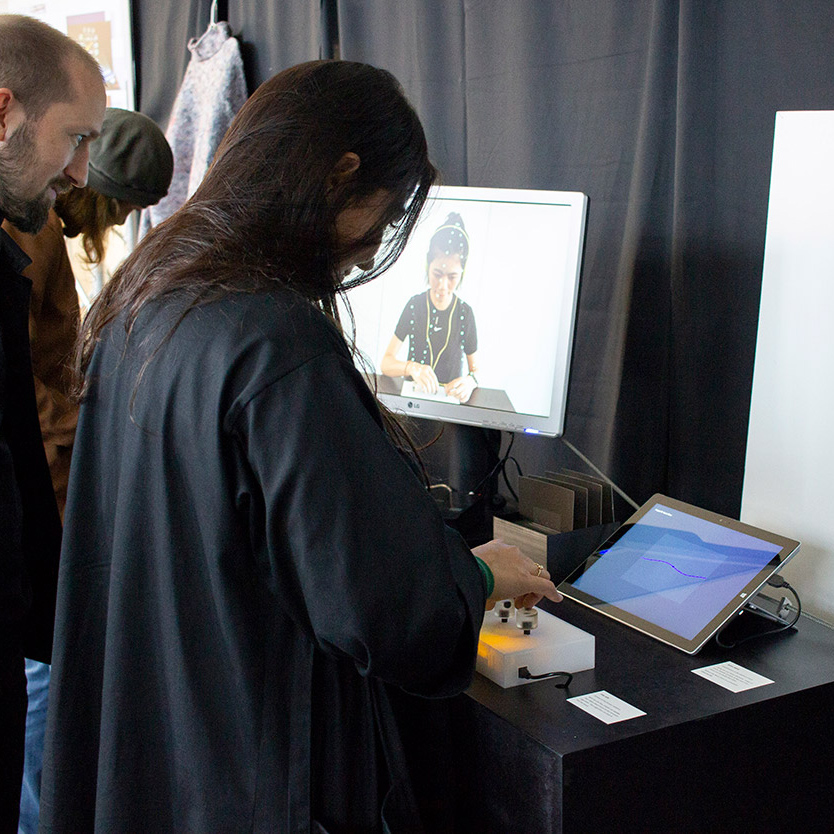Overview
Exploring Music with AI
Today people can listen to endless streaming music with just one click. AI can automatically choose music for us according to our listening behaviour. Is relinguishing the power of autonomous decision to algorithm really the future of music exploration?
My Role
Design Research, Conceptual Design
Year
2019 (3 months)
Approach
Research
Interviews
Literature Review
Mapping
Design
Sketching
Model making
Physical Computing
Video Making
INTERVIEWS
How People Listen to Music (2019)
At the beginning of the project I conducted 9 interviews with students, office workers, music professional to get to know how people listen to music today and their attitudes towards recommendation system of streaming platform.
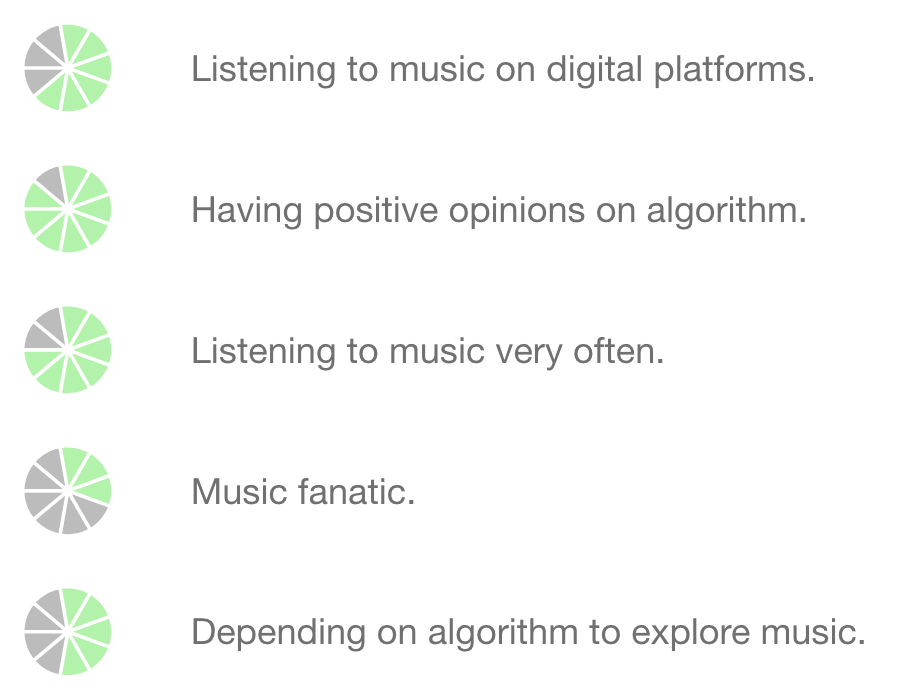
Insight: Most people listen to music frequently and think positive on the recommendation algorithm.
LITERATURE REVIEWS
Types of Listeners and the Evolution
To have an insight into the trend, I compared the results of my interviews with a study.
2006 (results from a study by Emap)

2019 (results from the interviews)

Insight:People are consuming more music nowadays. More people are music lovers but they are not trying more to explore music by themselves. More power has been given to algorithm.
MAPPING
The Evolution of Music Consumption
Two axises to describe the trend.
Finding: To explore music is being more effective while listeners give out more autonomy.
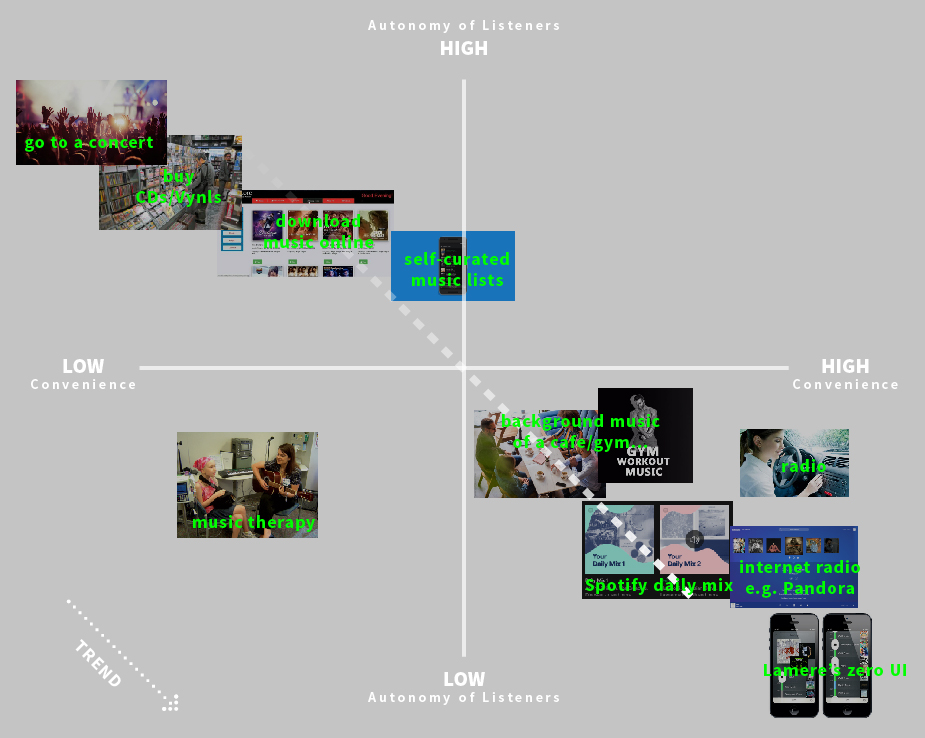
SPECULATIVE SCENARIO
What If AI Decides What We Listen in the Future...
Think about a far future when technologies are highly developed. AI can understand people through sensors. People don’t need to do anything while AI would analyse people automatically and play the right music.
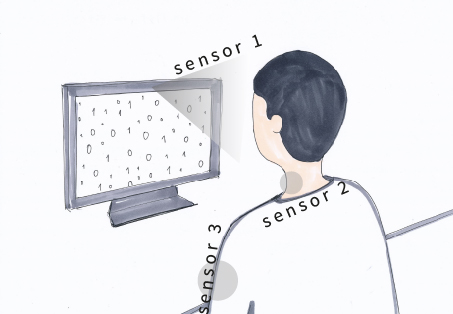
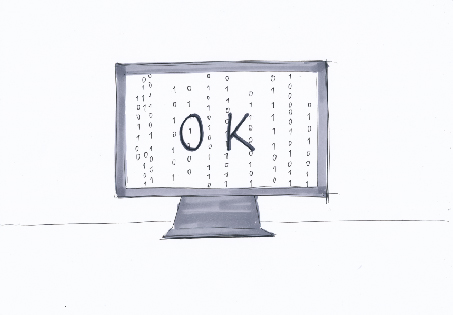
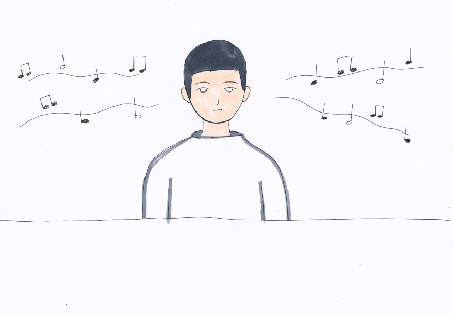
Insight:We want algorithm to help us explore music, but not to decide what we listen.
LITERATURE REVIEWS
Mechanism of Recommendation Algorithms
After some secondary research about several popular digital platforms of streaming music, I visualised the mechanism of Spotify's Taste Profile - the core of its recommendation system - according to Musica Analytica: The Datafication of Listeningby Robert Prey, 2016.
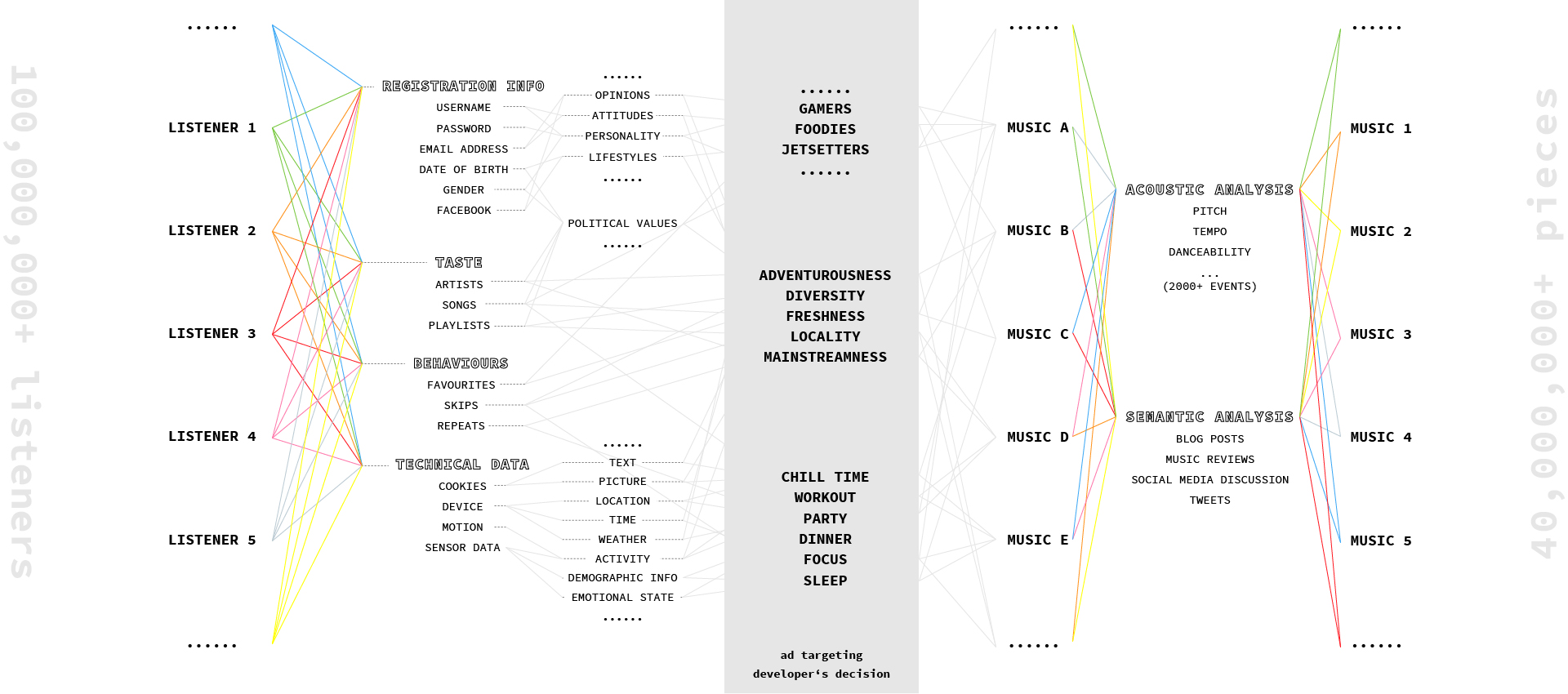
Finding: Algorithms do konw people to some extend. However their most important role is to work for companies' interests. They recommendations are generic.
DESIGN EXPERIMENT
Is It Possible to Describe Music Objectively Using Visual Language?
I designed a tool, with which people's perspective about a piece of music can be interpreted into a wave form. Four parameters - range, density, tempo and colour - can be adjusted to control the form and motion of the wave.
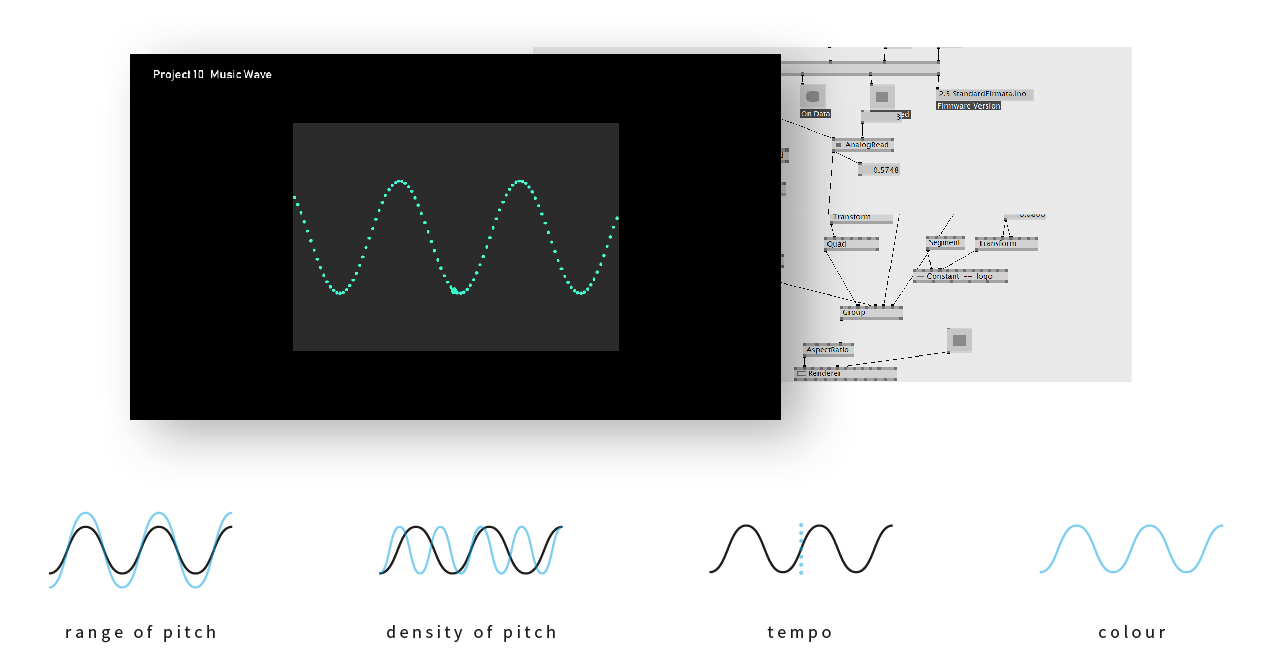
The Experiment and the Results
To test whether the four parameters work well to describe music, I ask nine volunteers to use it. All of them were listening to the same piece of music - Fly Me to the Moon by Nat King Cole. Check the documentation.
Results: It shows some similarities, for examples the red waves and the blue waves. At the same time there're also great differences, the yellow and green one.
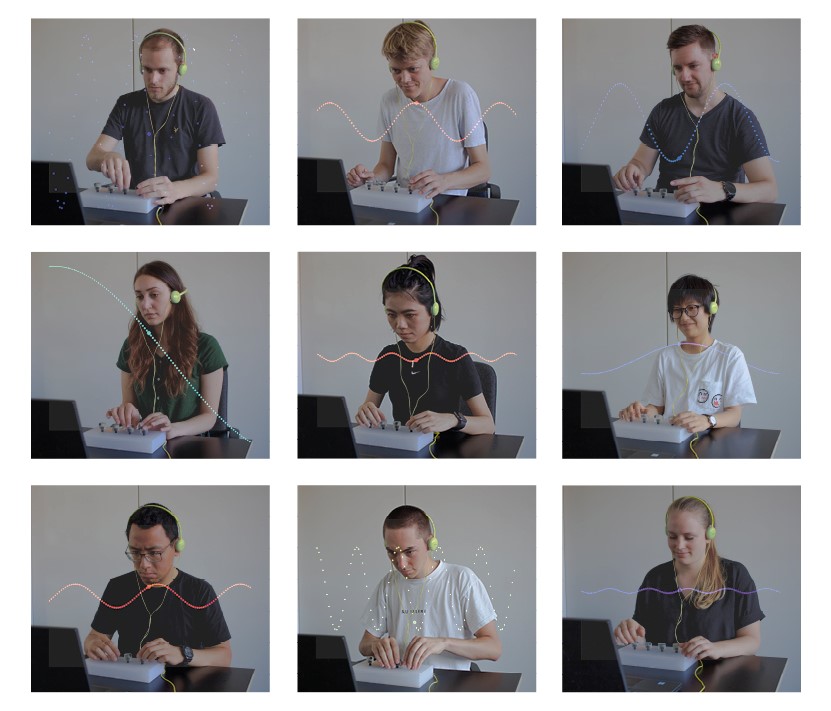
My Opinion
« It's very difficult to find a universal way to precisely describe how every individual perceives music. However, With new technologies, companies are trying very hard to get to know us. If we don't know ourselves, we'll be definitely dominated by AI one day. »
PRESENTATION
A Show
I designed a show to present the research and also I presented the way to explore music using visual language.
